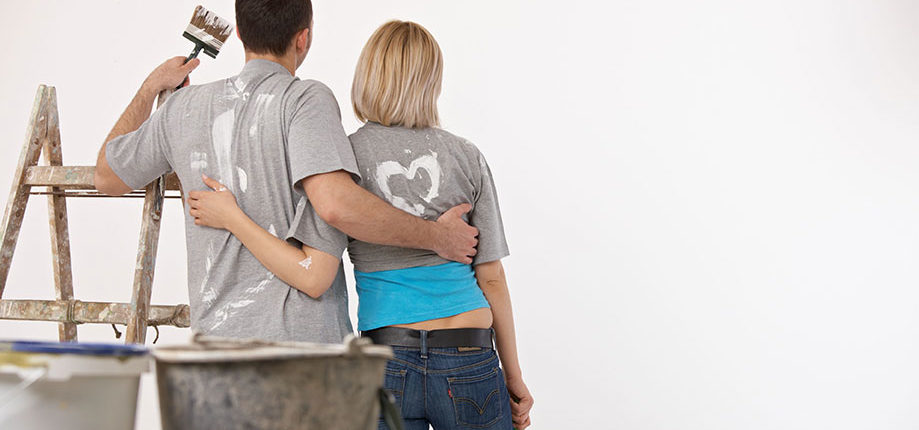When flipping a house on thin margins, painting is something any house flipper can do. Major structural repairs or electrical? You may want to leave that to the professionals. But painting? This is an area you can really save money when you do it yourself and reap rewards when you do it right! Painting is something you will be doing at the end of a rehab to avoid damage on freshly painted walls. As with any DIY job, realize it will take more than a day or two.
Step One: Prep
Supplies:
- Sander(s) and respirator. If you are not replacing molding or want to refinish cabinet doors, you will need sanders and scrapers to remove old paint or smooth out the surfaces.
- Patching Compound, putty knives and wet/dry sanding blocks for repairing holes, dents, dings, and sinking nail heads.
- Micro-fiber cloth and/or a good vacuum to wipe all surfaces down before painting.
- Caulk and caulking gun to run along molding where it meets a surface. Cut a small, angled notch in the nozzle and smooth with your finger after applying.
Step Two: Priming
Supplies:
- Painters tape for masking off windows and anywhere you don’t want paint to go (where the a wall meets the ceiling or molding)
- Canvas drop cloths are easy to work with, stay in place, soak up paint splatter, and are reusable.
- 2″ Angled brushes to cut primer into corners and where the molding meets the walls.
- Paint roller and roller arm. Chose the nap to match the wall texture. Buy extra, realively cheap rollers, wrap in saran wrap at the end of the day for re-use then toss when finished.
- Don’t waste the time and energy (not to mention the pollution to the water supply)!
- Primer – if you are painting over cabinets that have oil-based paint, you will need and oil-based primer. If you are painting over dried mildew or a smoke smell, you should consider Killz. If you are painting over unpainted drywall or joint compound, use a drywall sealer/primer. Have you local paint supply store shake the cans up.
Step Three: The Paint
Calculate the paint needed to cover the area. https://www.sherwin-williams.com/homeowners/color/try-on-colors/paint-calculator#/home
For walls, it’s better plan on two coats. Typically one-coat paint will have limited conditions. Typically an eggshell or satin finish (more luster than a flat finish) will be used in bathrooms, kitchens, and kid’s rooms because it is easy to wipe down. Otherwise a flat is used. Flat paint doesn’t reflect light and can hide tiny imperfections. Use eggshell for moldings for contrast and durability.
Supplies:
- Edged 2″ paint brush for cutting in corners, a high quality paint brush for molding, and a pail that will hold the paint brush when climbing a latter.
- More rollers and a paint tray with disposable liners. Plenty of liners.
- Brush/roller cleaning tool.
- Ladder that you are able to rest the paint pail or paint tray
Step Four: The Video
Hauna Gallagher from Houzz Video gives some excellent pointers on applying the paint. https://www.houzz.com/houzz-tv/houzz-tv-how-to-paint-a-wall-like-a-pro-stshtvvw-vt~73102139


